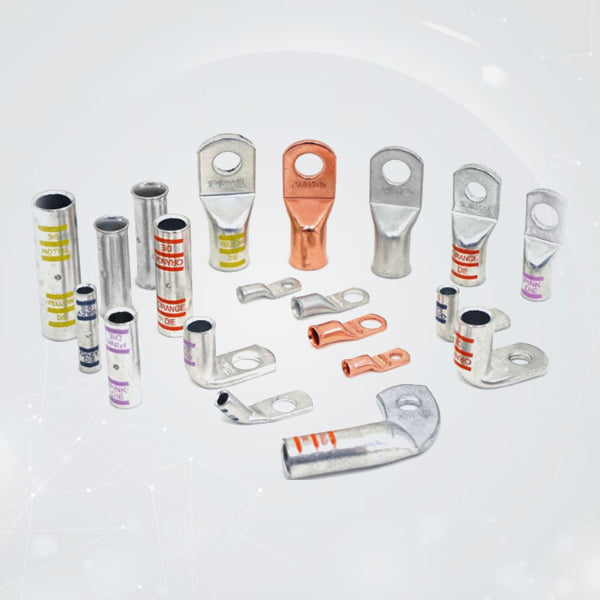
Understanding the Different Types of Terminal Connectors for Golf Cart Batteries
If you own a golf cart, whether it’s for cruising the course, running around a gated community, or zipping through your off-grid property, you already know how important your battery system is.
But here’s the part many golf cart owners overlook: your power is only as good as your connections.
From corroded terminals to loose crimping jobs, poorly installed or mismatched terminal connectors are one of the most common reasons for battery failure, voltage drops, and even short circuits in golf carts.
In this guide, we’ll break down the different types of golf cart battery cable lugs, how to choose the right ones, and how to make sure your connections stay clean, secure, and built to last.
Why Terminal Connectors Matter In Golf Carts
Golf carts don’t use just any battery setup. Most of them are using multiple deep-cycle batteries, either in series or in parallel, depending on voltage need.
That has a lot of amperage going through your cabling, and each connection point is a possible failure point.
If your golf cart cable lugs are:
- Loose
- Undersized
- Corroded
- Poorly crimped
…you’ll feel the effects. Slower acceleration, dim lights, inconsistent power, or even total failure to start.
And the fix? Often, it starts with swapping out worn or incorrect terminal connectors for high-quality, properly sized lugs.
Types Of Terminal Connectors For Golf Cart Batteries
Let’s break down the most common types of golf cart battery cable lugs and how they’re used:
1. Ring Terminal Lugs
These are the most popular and widely used. They slide over the golf cart lug stud (typically 5/16" or 3/8") and provide a strong, bolted connection to the battery terminal.
- Ideal for: Battery-to-battery links, motor controller wiring, and accessories
- Available in: Various wire gauges (6 AWG, 4 AWG, 2 AWG, etc.)
- Best paired with: Heat shrink tubing for a sealed, weather-resistant connection
Selterm offers a selection of golf cart cable lugs that are produced from high-conductivity copper with a tin-coat to resist corrosion.
2. Flag-Style Terminals
These are right-angle or sideways lugs that fit into tight spaces or require limited vertical height.
- Ideal for: Low-clearance battery compartments
- Benefit: Allows wire to exit sideways, keeping cables neat and manageable
- Often used in: Older or modified golf cart battery trays
3. Braided Ground Straps
A braided copper strap (which is not technically a "lug") with termination ends is used to ground the frame or chassis to the battery system.
- Ideal for: Reducing electrical noise and ensuring grounding continuity
- Flexible: Perfect for absorbing vibration and movement
- Should be used: Alongside proper lugs for a complete install
4. Stud Size Variations
Different battery terminals and busbars use different bolt sizes. The most common golf cart lug stud sizes are:
- 5/16" (standard for most golf cart batteries)
- 1/4" (for accessory connections)
- 3/8" (for upgraded or high-output systems)
Selterm’s battery lugs come in various stud sizes, so you can always find the right fit for your setup.
Choosing The Right Golf Cart Cable Lug
Here’s how to get it right the first time:
1. Match The Wire Gauge
Using a 4 AWG cable? You need a 4 AWG lug. No exceptions. A loose fit will cause resistance; a tight fit may crush wire strands.
2. Pick The Right Stud Size
Check your battery terminal bolt diameter. A lug that’s too large will shift, creating poor contact.
3. Use Tinned Copper
Tinned lugs resist corrosion, particularly in humid settings like if you store your cart in a shed or garage, or use it near the coast.
4. Crimp It Right
Always use a proper crimp tool, not pliers. A strong crimp is key to current flow and vibration resistance.
5. Seal The Connection
Slide heat shrink tubing over the crimp, then apply heat to shrink it down. This helps prevent moisture, dirt, and wire fray.
When To Replace Your Golf Cart Terminal Connectors
Even good lugs don’t last forever. Keep an eye out for these signs:
- Green or white corrosion around terminals
- Loose wires or bolts that won’t tighten
- Cracked or brittle insulation
- Voltage loss or inconsistent power
- Burn marks or discoloration around connections
If you see anything like the above, it's time to step it up to marine-grade or high-quality golf cart battery cable lugs from a reputable supplier like Selterm.
Real-World Applications & Upgrades
Here’s where these lugs are most often used:
- Battery Interconnects – connecting multiple 6V or 8V batteries in series for 36V or 48V systems
- Controller to Battery – feeding power to your cart’s motor controller
- Charger Hookups – ensuring a clean, consistent charge every time
- LED Lighting and Accessories – additional lugs for powering auxiliary lighting, sound systems, etc.
Planning an upgrade to lithium batteries? You'll definitely want to use high-quality golf cart cable lugs rated for higher current and efficiency.
Why Choose Selterm?
Selterm’s terminal connectors are trusted by DIYers, technicians, and power enthusiasts alike. Here's why:
- 99.9% pure copper for maximum conductivity
- Tinned finish for corrosion resistance
- UL-listed and easy to crimp
- Available in all standard golf cart sizes
- Ships fast in the U.S.
Whether you are replacing one connector or upgrading the entire bank, Selterm has the quality and variety you'll need to get the job done right.
Final Thoughts
Your golf cart works hard, hauling you across the course, property, or neighborhood. Don’t let poor terminal connections hold it back.
By selecting the correct golf cart battery cable lugs, and utilizing the correct installation method, you will provide safe and reliable power flow that lasts.
This is a small upgrade with big results.
When your cart powers up instantly, drives more smoothly, and charges more efficiently, you'll know it began at the connection.





